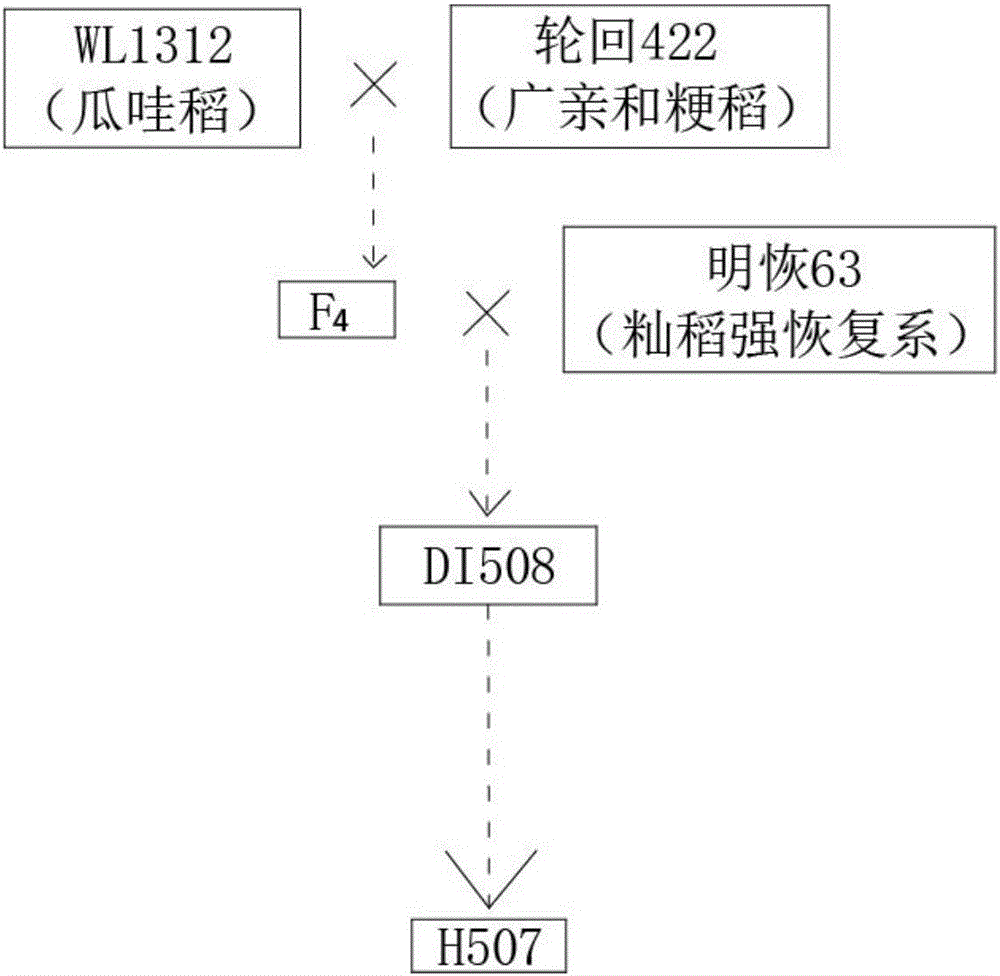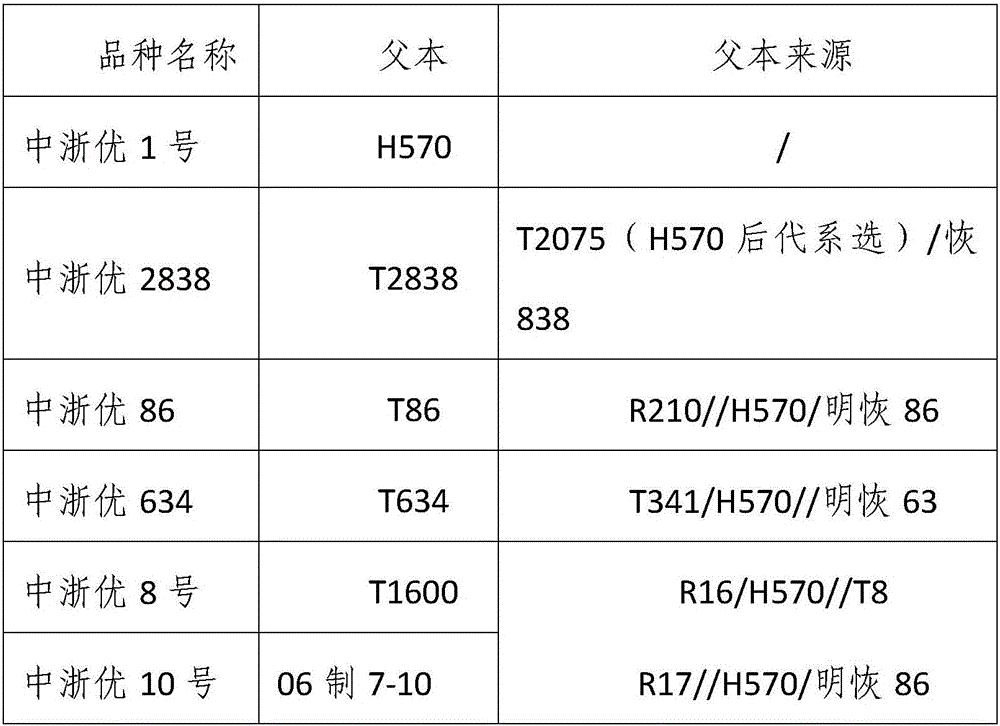Method for breeding three-line rice strong restoring line H570
A technology of strong restorer and restorer lines, applied in the direction of botany equipment and methods, application, plant genetic improvement, etc., can solve the problem that the plant type does not change much, so as to increase the cut-off area, increase the net photosynthetic rate, improve The effect of light utilization
- Summary
- Abstract
- Description
- Claims
- Application Information
AI Technical Summary
Problems solved by technology
Method used
Image
Examples
Embodiment Construction
[0020] The following will clearly and completely describe the technical solutions in the embodiments of the present invention with reference to the accompanying drawings in the embodiments of the present invention. Obviously, the described embodiments are only some, not all, embodiments of the present invention. Based on the embodiments of the present invention, all other embodiments obtained by persons of ordinary skill in the art without creative efforts fall within the protection scope of the present invention.
[0021] Such as Figure 1 ~ Figure 2 As shown, it is an embodiment of the present invention. In order to effectively utilize the heterosis between indica and japonica subspecies, the present invention systematically studies the offspring segregation changes under different hybridization and grouping methods, and designs four kinds of grouping methods in total: ① Japonica type Wide Compatibility Line / Indica Restorer Line; ②Japonic Wide Compatibility Line / Indica Resto...
PUM
 Login to View More
Login to View More Abstract
Description
Claims
Application Information
 Login to View More
Login to View More - R&D
- Intellectual Property
- Life Sciences
- Materials
- Tech Scout
- Unparalleled Data Quality
- Higher Quality Content
- 60% Fewer Hallucinations
Browse by: Latest US Patents, China's latest patents, Technical Efficacy Thesaurus, Application Domain, Technology Topic, Popular Technical Reports.
© 2025 PatSnap. All rights reserved.Legal|Privacy policy|Modern Slavery Act Transparency Statement|Sitemap|About US| Contact US: help@patsnap.com



